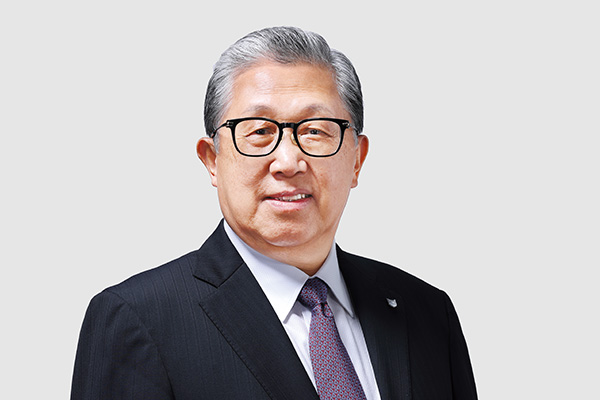CTO Message

Innovating for a better society
and continued growth
– Empowering future innovators to explore the unknown –
Evolving with the changing times
The world is entering a future society in which all industries will be incorporating innovative technologies such as AI, the IoT, robots, and big data to solve various social issues. Canon, which started out as a camera manufacturer, has promoted the diversification of its business in line with the needs of the times, centered on optical technology, and has expanded its business fields to include office equipment and optical products. Today, Canon operates in four industry-oriented groups: Printing, Medical, Imaging, and Industrial. During this period, management and R&D have been working together to develop technology management and build an optimal R&D system.
The technology behind Canon
Although Canon is composed of various businesses, we continue to grow as one unified company thanks to a system that enables us to make use of our accumulated technologies across the entire Group. The Canon Group’s technologies are classified into Technologies that go into products (Core Competency Technologies and Fundamental Technologies), Technologies that support products (Value Creation Technologies), and Technologies that commercialize products. Technologies that commercialize products do not exist independently. Through their use in product design in close combination with the platform of the Technologies that support products, they contribute to creation of competitive products that are difficult to be imitated by competitors. This development environment, in which we are able to combine technologies to create synergies, is also effective in integrating newly acquired technologies and those of companies acquired through M&A, serving as a driving force for Canon’s continuing evolution and creation of new value.
Looking ahead
It goes without saying that these technological capabilities are one of Canon’s strengths. And what gives us that strength is the presence of engineers who have a sense of responsibility and a sense of purpose. Canon has established a development environment where these engineers join forces to demonstrate their capabilities. In addition, we provide opportunities for joint research with universities and research institutions in Japan and overseas, study abroad programs, and other initiatives so we can absorb the latest technologies in fields that need to be strengthened. By further reinforcing these fields, we will refine and enhance our technology.
Social contributions and growth through innovation are what made Canon into the company it is today. The Canon of the future will continue to further evolve and grow by developing human resources who will take on challenges in uncharted fields.
Toshio Homma
Executive Vice President & CTO,
Canon Inc.
![]()


